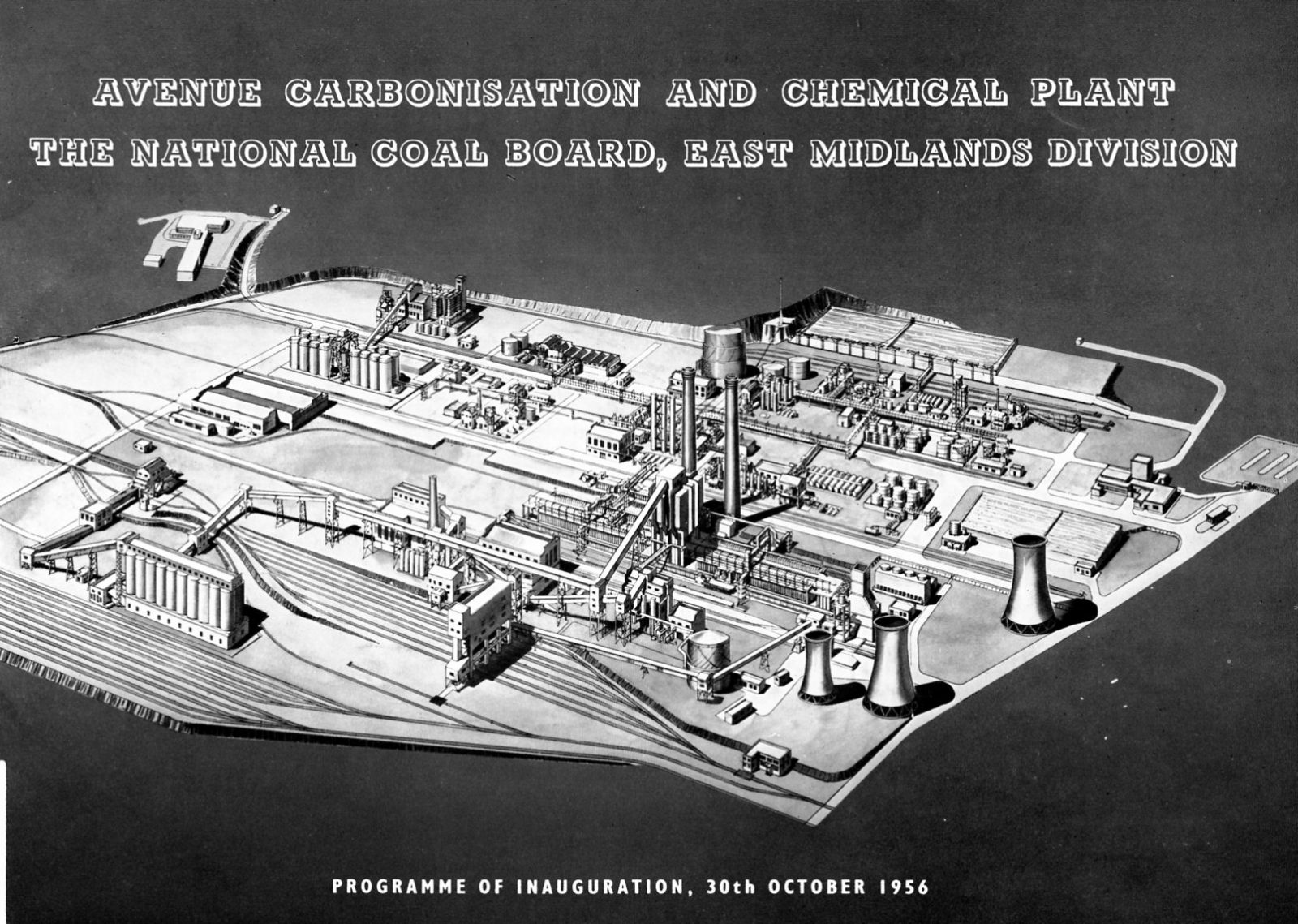
Our July 2022 meeting heard about how the Avenue Carbonisation and Chemical Plant, Wingerworth, was decontaminated in the 2000s. As a background this post looks at the opening of the works in the 1950s, through to closure and decontamination.
A slightly edited version of this account is available to download as pdf form the page here.
The works were officially inaugurated on 30 October 1956 with much celebration – photos in this post are taken from the official brochure marking the event. The plant was described as ‘the largest single contract yet placed by the National Coal Board …’ with the event marking ‘… the beginning of full-scale operation of the Board’s largest and most up-to-date coal carbonising plant’. It was originally designed to be doubled in size if needed, to be fully integrated and use coal from ‘locally-mined coals of lower rank’. Construction had started on the site in 1952.
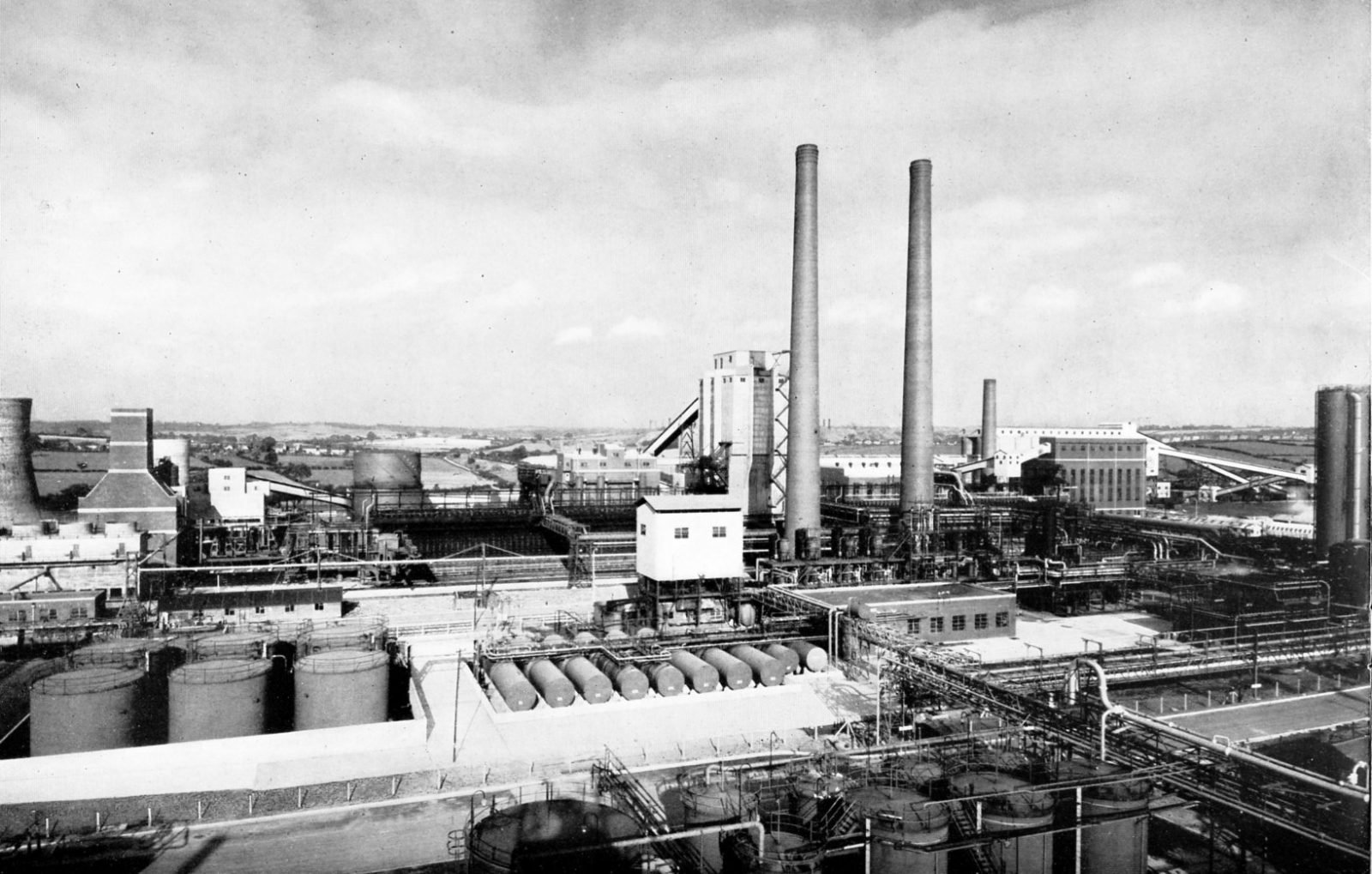
From the start it not only produced coke from coal but also refined by-products from the conversion. These included benzole, crude tar, sulphuric acid and sulphate of ammonia. Taken together this led to the site, which finally closed in 1992, being branded one of the most polluted in Europe.
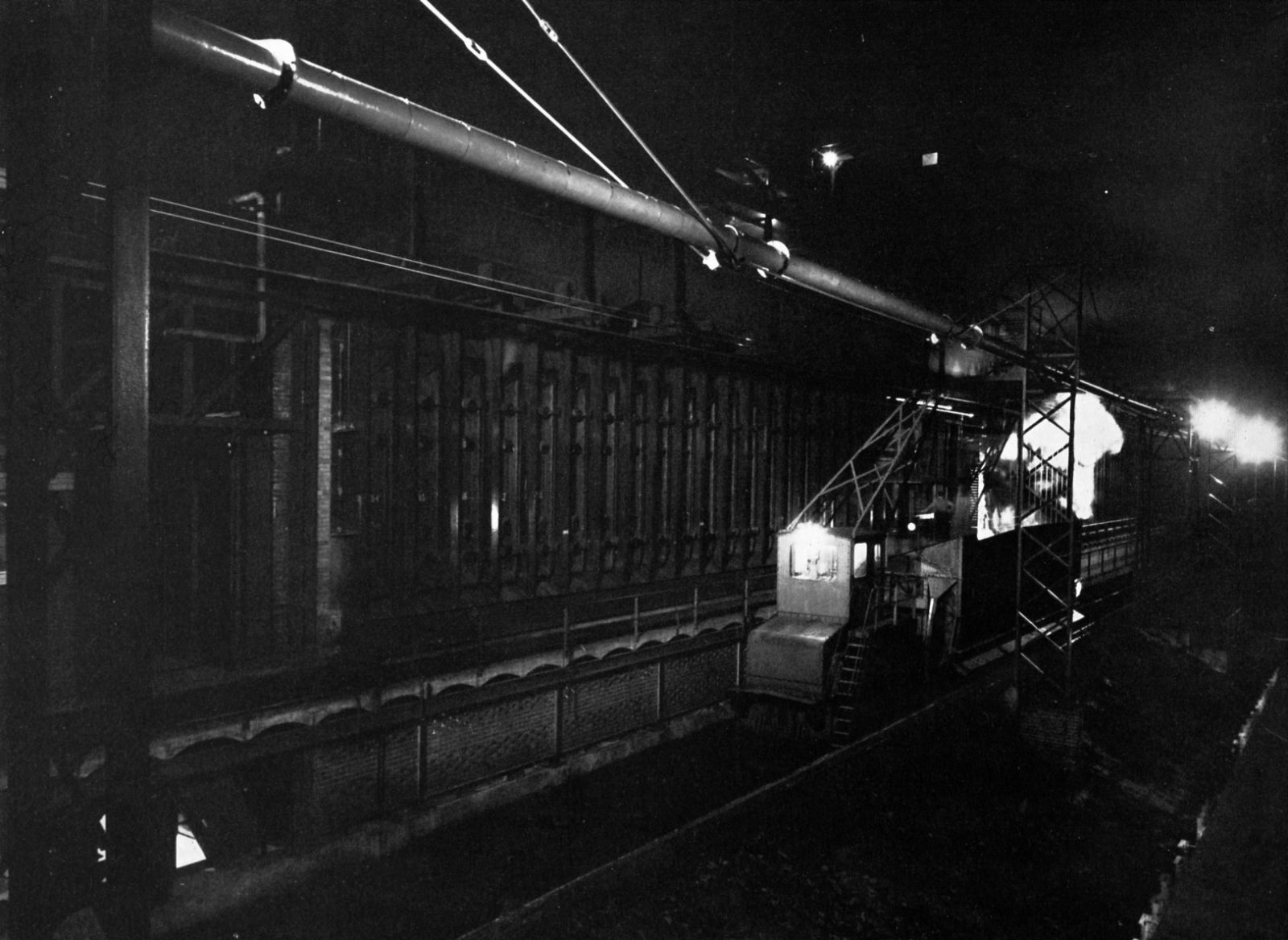
When opened the site, totalling 188 acres, was expected to take 475 people to run it. There were three miles of internal roads, over 10 miles of internal railway, with a further five miles connecting to the plant and for marshalling purposes. On closure more than 500 people were reported as working there, but at its peak it had employed some 800.
Produced coal (‘town’) gas was also used on site and exported, by pipeline, to the former Staveley Works and the glass works on Whittington Moor.
Pollution from the site was an ever-present issue. Nearby residents were subject to smells and a familiar sight for many years was a bright flare burning off gases.

Following closure in 1992 the site was not fully decommissioned or demolished until it passed to the former East Midlands Development Agency in 1999. Demolition then took five years, with the subsequent decontamination costing some£172m. Over 90% of the site contamination is thought to have come from disposal of industrial waste by former operators – British Coal – in addition to pollution directedly from the various processes.
The July 2022 talk revealed just how the former Avenue Carbonisation and Chemical Plant was decontaminated. It featured Clive Paxton BSc.(Hons). MICE. C.Eng., Senior Associate Director of Construction (retired!) and David Stewart MEng (Hons) MICE C. Eng, Senior Associate Director. The taled was labelled “The Remediation of the Avenue Coking Works, Wingerworth – The biggest Environmental Clean up in Europe!”
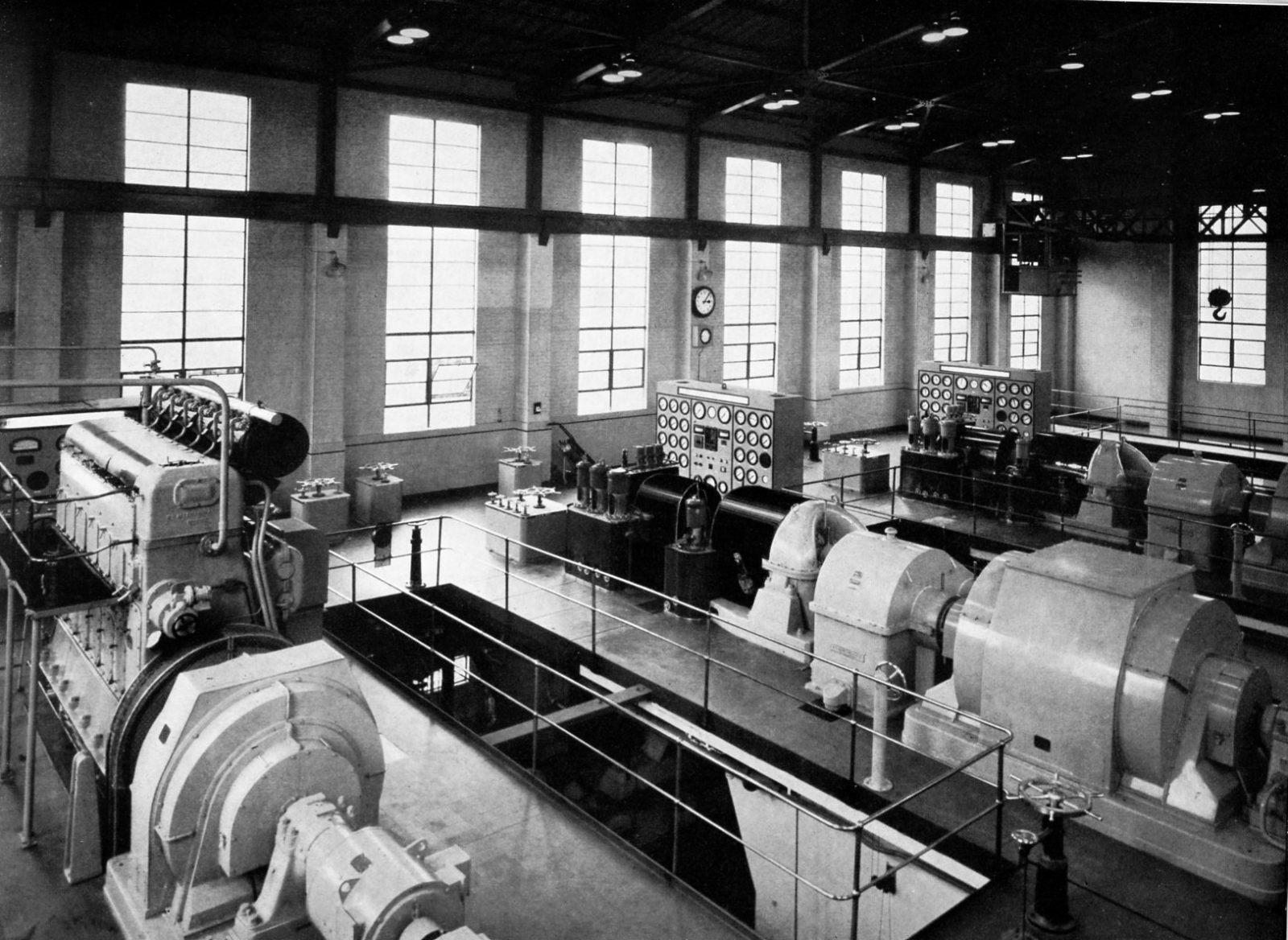
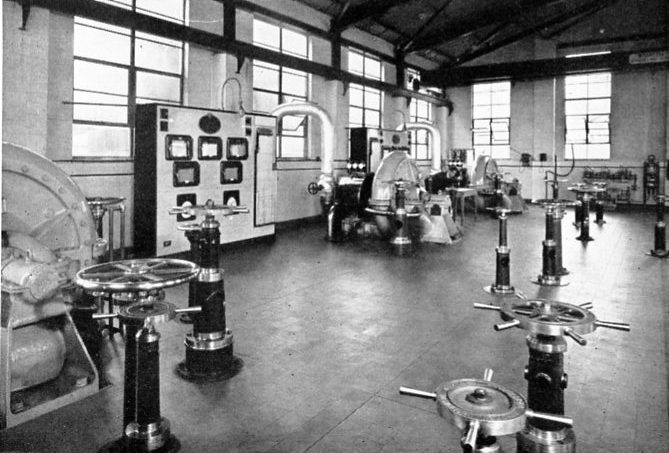
This post was edited on 21 July 2022 from the original one, which promoted the talk held on 18 July 2022.
